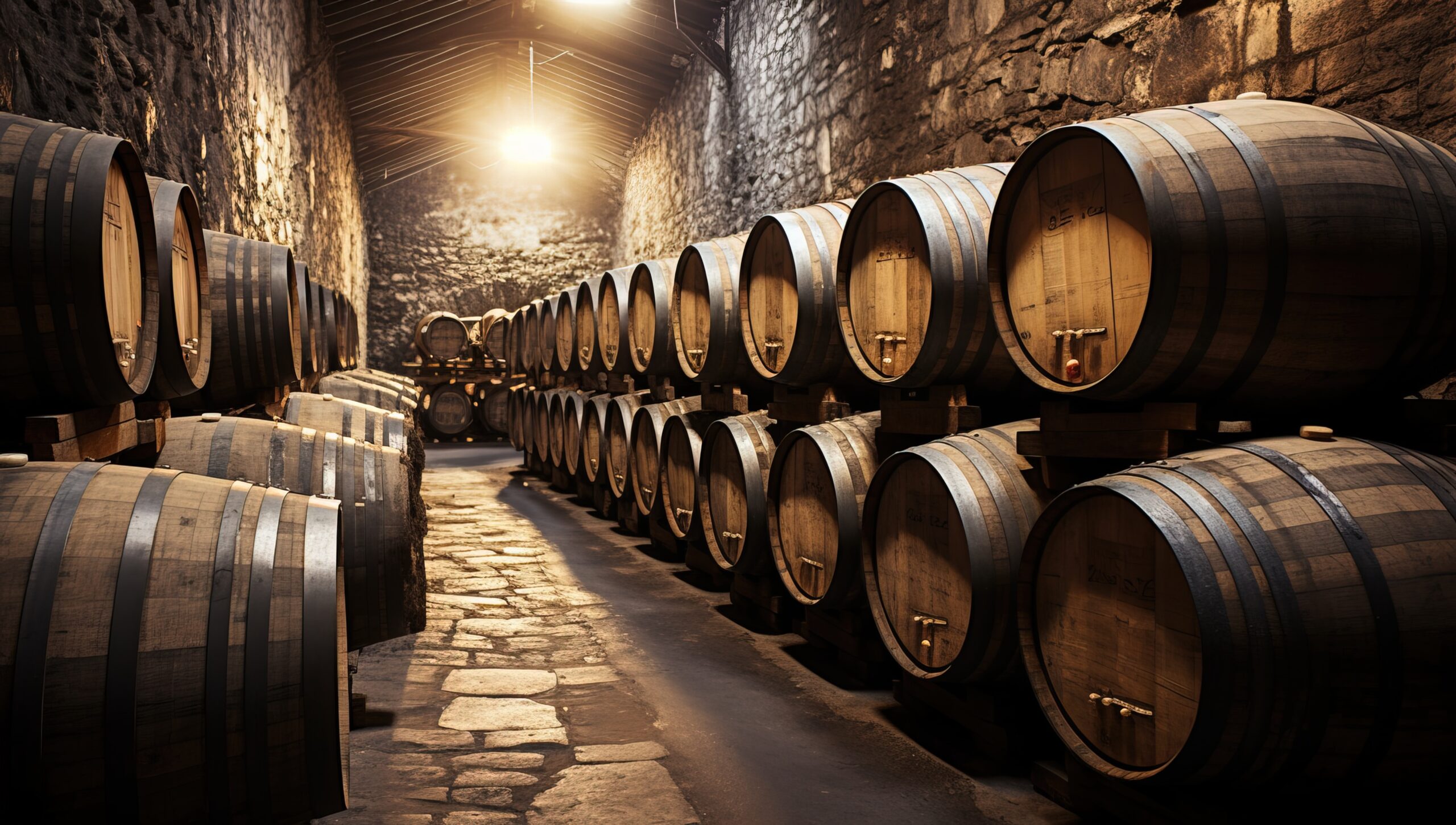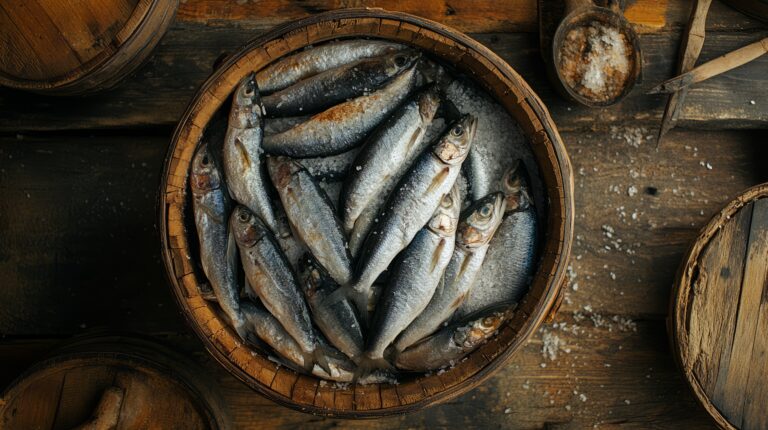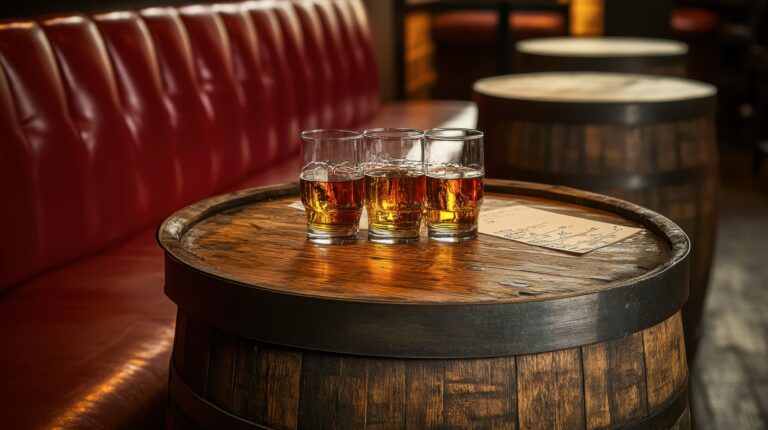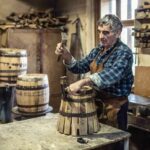Ever wonder why some of your favorite whiskeys, like bourbon or scotch, have that incredible depth of flavor? You’re not just tasting the grain and the distillation process; you’re also tasting the long, slow, and masterful work of a charred oak barrel. It’s all thanks to some fascinating chemistry where wood and fire team up to create a truly unique spirit. As you pour a glass of whiskey, rum, or scotch and take in the aromas of vanilla and spice, you’re experiencing the results of years of chemical reactions happening inside those barrels.
The process of barrel charring begins by exposing the inside of the oak barrel to an open flame. This creates a layer of charcoal that will interact with the spirit. The intense heat breaks down the wood, releasing delicious compounds like vanillin, which gives off those enticing vanilla and spiced notes. Once the spirit is in the barrel, it soaks into the wood, pulling out even more of these flavorful compounds. As the seasons change, the spirit expands and contracts, pushing itself in and out of the wood.
After years of this cycle, you’re left with a wonderfully mellow and complex flavor profile. So the next time you swirl a glass of aged whiskey, remember that you have chemistry to thank for every sniff and sip. Science never tasted so good!
The History of Barrel Charring for Whiskey
Barrel charring has been a key part of making whiskey for centuries. As far back as the 15th century, coopers would char the inside of barrels to get rid of unpleasant odors before aging spirits. They soon realized that this simple step also added a distinctive, smoky flavor to the whiskey.
Today, most whiskey producers use barrel charring to some degree. The char is created by burning the inside of the barrel, which caramelizes the natural sugars in the wood. This is what gives whiskey aged in charred barrels those wonderful hints of vanilla, caramel, and toast. The char layer also acts like a filter, mellowing the whiskey by absorbing some of the harsher compounds from the new distillate.
The level of char depends on the producer’s preference and the desired whiskey flavor profile. A light char, or toast, will add subtle flavors, while a medium char provides more prominent caramel and vanilla notes. A heavy char imparts robust, smoky flavors that can define a whiskey’s character. Bourbon, for example, is legally required to be aged in new, heavily charred oak barrels, which contributes to its signature smoky-sweet profile.
Whether it’s just a hint of flavor or an assertive smoky finish, charring barrels has a lasting impact on a whiskey’s taste and aroma. This simple yet crucial step is instrumental in creating some of the world’s most prized spirits. Understanding the effect of different char levels allows whiskey lovers to choose a dram that’s tailored to their tastes.
What Is Charring and How Is It Done?
To get those signature flavors of vanilla, caramel, and oak, barrels are always charred before the spirit is aged in them.
Charring is essentially burning the inside of the barrel to create a layer of carbon. Coopers use a gas torch to torch the barrel to the desired level. The level of char depends on the whiskey maker’s preferences, from a light toast to a dark, “alligator” char.
A light char, which is typically a quick, 15-30 second torching, creates subtle flavors. As char levels increase to medium and heavy, the vanilla, caramel, and oak notes become more intense. The charred layer also acts as a filter, mellowing the whiskey by absorbing some of the harsh compounds from the distillate.
The charring process completely transforms the physical and chemical properties of the wood. The heat breaks down the lignin and cellulose in the wood, creating the complex flavors we know and love in aged whiskey. It also caramelizes the wood sugars, imparting a sweet, nutty flavor. The charred layer also provides more surface area for the whiskey to interact with the wood.
All of these factors—the flavor compounds created by charring, the filtering effect, and the increased wood interaction—are why charred barrels are so good at creating rich, multidimensional aged whiskeys. The alchemy of charring and time creates a spirit as complex as the stories that inspired it.
The Chemical Effects of Charring on the Barrel
Charring the inside of a whiskey barrel has a huge impact on the flavor of the aging spirit. When the barrels are charred, the intense heat breaks down the wood into chemicals that give the whiskey its distinct flavors.
The most important chemical reaction is the breakdown of hemicellulose, one of the main components of wood. When heated, it caramelizes into a variety of flavorful compounds like vanillin, the main flavor in vanilla. The charred wood also releases lignin, which gives whiskey aromas of clove and smoke.
Charring the barrel also creates a layer of charcoal, which is very porous and helps filter and mellow the whiskey as it ages. The charcoal traps impurities and also absorbs and releases certain compounds from the whiskey, which helps create its distinctive, smooth taste.
The level of char or “toast” on the barrel has a big effect on the flavor. A lighter toast will bring out more raw wood and vanilla flavors. A heavier char imparts more robust aromas of caramel, chocolate, and spice. Master distillers carefully control the char level to produce the perfect flavor profile for their whiskey.
Charring oak barrels is truly an art form and one of the most important steps in crafting a premium whiskey. The complex flavors from the interaction of the spirit and the charred wood are what give great whiskeys their distinctive character. Without charring, whiskey would lack much of its familiar warmth and range of tastes.
How Charring Impacts Whiskey Flavor
Charring whiskey barrels exposes the wood to high heat, which chemically alters the oak and directly impacts the flavor of the whiskey. As the barrel chars, compounds in the wood break down and impart a smoky, spicy character to the whiskey. The char also opens up the wood, allowing the whiskey to penetrate more deeply during aging.
The flavors from charring are quite complex. You’ll detect hints of vanilla, clove, cinnamon, and toasted nuts. The char creates a layer of dark, carbonized wood that the whiskey absorbs during maturation. This is how bourbons get their distinctive smoky, spicy notes. The char level, from light to heavy, determines how much of these flavors are imparted to the whiskey.
During charring, volatile compounds in the wood are released and then captured by the whiskey. This includes organic chemicals like lactones that give bourbon its distinctive coconut aroma. The heat also breaks down lignin, a polymer in wood that produces the sweet vanillin as it decomposes. More lignin is broken down with heavier charring, leading to more vanillin in the whiskey.
Charring is truly an art form and requires precise control and timing. Master distillers carefully manage the charring process to produce the perfect balance of flavors in their whiskey. The depth and duration of charring have a significant effect on the final product. By charring whiskey barrels, distillers are able to create an amazing array of flavors that produce award-winning bourbons and other whiskeys.
Types of Chars and Their Flavor Impacts
The type of char used in aging whiskey has a significant impact on its flavor. A light char, often used for bourbon, imparts subtle smoky notes, while a heavy char can lead to more robust, intense smoky flavors.
Light Char
A light char, known as a toast, gently warms the wood. It brings out the oak’s natural sweet flavors like vanilla, caramel, and spice. The whiskey absorbs these flavors as it ages. Popular for bourbon, a light char allows the whiskey’s grain and barrel flavors to shine through.
Medium Char
A medium char scorches the wood more, leading to hints of chocolate, coffee, and dried fruit in the whiskey. The char creates a balanced blend of oak, smoke, and spirit flavors. Many single malts and high-rye bourbons use medium char barrels.
Heavy Char
A heavy char, also called an alligator char, deeply burns the wood. This char imparts intense smoky, tarry flavors that can be overpowering. However, when used in moderation, a heavy char creates a complex, robust whiskey with layers of oak, smoke, spice, and toasted nuts. It’s often used for Scotch whisky, especially peated single malts.
In the end, the char level comes down to personal taste. Do you prefer a light, medium, or heavy smoky flavor in your whiskey? The choice of char helps create a balanced, flavorful spirit.
Other Benefits of Charring Barrels
Charring whiskey barrels provides benefits beyond just flavor.
Preservation
The charred interior of the barrel helps preserve the whiskey as it ages. The char creates phenols that prevent oxidation and bacterial growth, allowing the whiskey to mature for years without spoiling.
Color
The charred wood imparts an amber color to the whiskey. As the whiskey interacts with the charred barrel, compounds from the wood are extracted, giving aged whiskeys their distinctive caramel color.
Smoothness
The charred surface area in the barrel helps mellow the whiskey’s flavor. Harsh compounds in the distilled spirit break down and interact with the wood, resulting in a smoother, mellower taste. This transformation, along with evaporation, is responsible for the smooth and complex flavors of aged whiskeys.
Unique Flavors
The char releases aromatic compounds from the wood that impart distinctive flavors to the whiskey like vanilla, cinnamon, and clove. Each barrel and type of wood produces a unique flavor profile, which is why barrels are often used more than once to produce a consistent taste. The flavor from first-use barrels is especially prized.
In summary, charring barrels is essential for preserving, coloring, mellowing, and flavoring aged whiskeys. The chemical reactions between the spirit and the charred wood create the distinctive taste of fine, aged whiskeys. No wonder charred oak barrels have been used for centuries!
Customizing Char Levels for Different Whiskeys
The level of char on the inside of whiskey barrels significantly impacts the flavor of the aged spirit. By adjusting the char level, distillers can customize the barrel’s influence on their whiskey.
Light Char
A light char with toast level 1 or 2 will impart very subtle wood flavors that enhance the natural aromas and tastes already present in the distillate. This level of char is often used for delicate whiskeys where wood influence needs to be minimal. The short exposure to fire primarily sterilizes the inside of the barrel without adding a strong charcoal flavor.
Medium Char
Most bourbon and whiskey producers use a medium char level of 3 or 4. This level of charring creates more complex wood sugars that caramelize into vanilla and spice notes during aging. A medium char also allows tannins to slowly enter the whiskey, creating subtle textural changes. This char level creates a balanced blend of wood and spirit flavors.
Heavy Char
A heavy char of level 5 and above dramatically alters the wood structure and creates more robust burnt flavors like chocolate, coffee, and smoke. The heavy char also releases more tannins that can make the whiskey feel dry and astringent if aged too long. A heavy char is often used for bold, robust whiskey styles where a dominant wood-forward flavor is desired. The intense heat chemically alters the wood fibers, resulting in the creation of distinct charcoal and toasted flavors.
By adjusting the char level on their barrels, distillers can create custom wood flavor profiles to complement the natural aromatic and taste compounds already present in their distilled spirit. The right level of char helps create harmony between wood and whiskey.
Major Whiskey Brands and Their Barrel Charring Practices
Major whiskey brands use different charring practices to give their spirits a distinctive taste.
Maker’s Mark
Maker’s Mark is known for its red wax seal and wheated bourbon. They use a medium char, #3, to lightly toast the barrels. This enhances the sweet, smooth flavors from the wheat in their mash bill without overpowering it with smoky notes.
Jack Daniel’s
The iconic black label Tennessee whiskey uses a heavier char, #4, which gives it a pronounced vanilla and caramel taste. The aggressive charring also helps mellow the flavor of the corn in their mash bill.
Jim Beam
Jim Beam, one of the world’s best-selling bourbons, uses a medium-heavy char, #3 1⁄2. This achieves a balance of oak, brown sugar, and spice flavors to complement the traditional Kentucky bourbon mash bill of corn, rye, and malted barley.
Woodford Reserve
Woodford Reserve, a premium small-batch Kentucky bourbon, uses a lighter char to highlight the distillery’s signature mash bill recipe. The #3 char allows more subtle oak and fruit notes to come through in their complex, layered flavor profile.
As you can see, a brand’s choice of barrel char depends entirely on the flavor profile they want to achieve, based on their specific mash bill and distilling techniques. The charring process is truly an art form and critical to giving each whiskey its distinctive taste and aroma.
Frequently Asked Questions About Whiskey Barrel Charring
Charring whiskey barrels is a key part of creating the spirit’s flavor. The charred wood interacts with the whiskey as it ages, imparting smoky flavors and its signature amber color. Here are some common questions about the process:
Why do distillers char the inside of barrels?
When barrels are charred, it creates a layer of charcoal inside. As the whiskey ages, compounds in the charcoal impart flavor and help filter the whiskey, giving it a smoother taste.
How are barrels charred?
Barrels are charred using controlled fires that burn away part of the inside wood. Distillers can control how much of the inside is charred by regulating the fire’s intensity and duration. More char means more flavor is imparted to the whiskey.
What flavors does charring add?
The charred wood adds flavors like vanilla, caramel, and smoke. The specific flavors depend on the type of wood, like oak, and the char level. Charring also gives the whiskey its distinct amber color.
Does charring affect aging?
Yes, the char layer helps speed up the aging process. The char has more surface area than raw wood, so it provides more area for the whiskey to interact with the wood. The char also helps filter the whiskey as it ages.
How long do charred barrels last?
Charred oak barrels can typically be used for 3 to 5 batches of whiskey before they need to be replaced. After a few uses, most of the flavor compounds in the charred wood have been imparted to the whiskey. At this point, the barrels lose their effectiveness for aging and flavoring whiskey.
Final Thoughts
So now you know why whiskey distillers char those wooden barrels. They want to impart rich, smoky flavors into their spirits that can only come from the inside of a burned oak barrel. The charring process produces compounds like vanillin that give whiskeys their characteristic aromas and tastes. Without charring, your favorite bottle of bourbon or single malt scotch wouldn’t have the same complex flavors and aromas. The next time you swirl and sniff a glass of whiskey, think about those charred wooden barrels and the chemical reactions happening inside them. Science is pretty cool, especially when it results in a smooth and flavorful glass of whiskey. Go ahead and raise your glass—you’ve earned it after learning so much!







